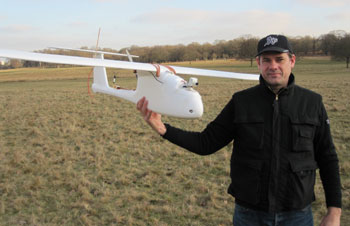Whereas real-time mapping holds great promise for protecting the world’s forests, drones and dogs are beginning to be deployed to protect wildlife from poachers.
This past year has been horrific for elephants and rhinos in South Africa, where these endangered animals have been decimated by poachers – tens of thousands of elephants and 668 rhinos have been killed for their ivory.
Dogs can track people even in darkness, and drones can be heard and seen in the sky. Once news spreads that they are there, poaching quickly drops off.
That in itself is helpful, but the conservation community is quickly embracing the use of drones to also find poachers before they kill animals. Besides elephants and rhinos, drones are being deployed to help orangutans, tigers and other endangered species. They are even monitoring illegal driftnet fishing in the Mediterranean.
"Trying to keep track of endangered wildlife in an area 6x the size of Manhattan, and with a team of just 120 rangers, can be like finding needles in a hay-stack. The teams urgently need aerial support so that they can ensure they are covering the areas most at risk," says Ol Pejeta, which has been using crowdfunding to support drone operations that protect rhinos.
"The drones are fitted with a live streaming HD camera, which is gimbal mounted for 360 degree remote controlled viewing. Each drone can cover 50 miles, and fly for over one and a half hours. Rhino and other endangered species are chipped with radio frequency ID tags. Each chip gives an animal a unique identification number which are tied to databases. Sensors on the drones can then recognize individual animals and use on-board GPS to store an image tagged with location coordinates."
These drones are tiny compared to those used in the military and they don’t carry weapons. They are simply used to monitor huge swaths of land from the sky.

US-based Unmanned Innovation makes a drone that flies over the landscape in pre-programmed patterns and sends a live video feed to a laptop computer. It’s equipped with a high-definition camera and high-power zoom during the day and thermal imaging for night flights.
Another group, ShadowView, is a non-profit aerial surveillance group, just launched to help conservation efforts.
In the UK, drones are being used to stop illegal hunters. Although hare coursing, badger baiting and fox hunting with dogs are illegal in England, Wales and Scotland, it still continues.
The Ulster Society for the Prevention of Cruelty to Animals in Northern Ireland and the League Against Cruel Sports are using drones. "There is a war in the countryside and whilst there are still individuals determined to flout the law and seek new ways to avoid detection, the League will continue to explore safe, tested and innovative technology to further our charitable aim of ending cruelty to animals in the name of sport," says Joe Duckworth, who heads the League Against Cruel Sports.
Hunters are pushing back of course, saying it’s an invasion of their privacy.
"We fly and film within the law and within CAA flight regulations of the UK," says ShadowView. "We are filming illegal hunts, so if you’re not acting illegally you have nothing to worry about. It’s interesting that poachers and illegal hunters are the first to complain about invasion of privacy when activists document their crimes; I cannot imagine the police or courts being very sympathetic to an armed bank robber complaining that his crime was filmed, as being an invasion of his privacy," says co-founder Steve Roest.

 Loading...
Loading...
maybe,just maybe,this will help….